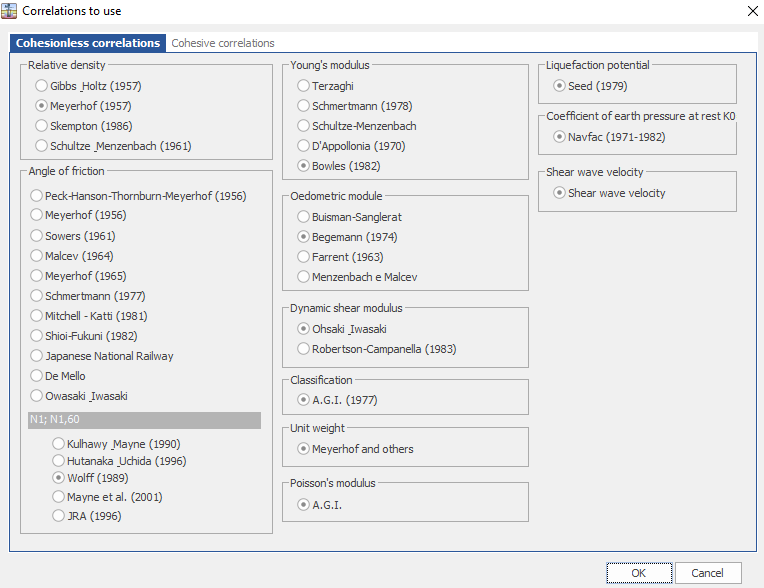The program contains a data base of methodologies and data to correlate the observed soil properties to the more significant geotechnical parameters that characterize soils.
For each parameter type a number of different authors may be selected (see Geotechnical correlations). By default the program uses a set of correlations but with expert, or local knowledge, or for explorative aims these can be altered.
To see or alter the selected set open the "Correlations to apply" window (Home > General Data menu).
The window has a tab for cohesive and one for cohesionless soils and within each parameter, evaluation can occur according to different authors.
This choice is not tied to an individual test, but applies to the evaluation process as follows:
1.When a test is processed (Process not Reprocess) for the first time, the selections made in "Correlations to apply" are used AND the set is recorded with the test.
2.If later the test is again processed (not Reprocessed) the stored set is used again, not the "Correlations to apply" set that may have changed in the intervening time.
3.After processing, it is possible to alter the correlation authors for specific layers. When this is done the alteration is incorporated in the set associated with the layer and will be reused on subsequent process commands.
In this way it is possible to refine the parameter set for each test.
Alterations to the operative correlations relevant for other tests need not be rolled back if the original test must be re evaluated, say consequent upon an alteration to the stratigraphy.
If however it is required to start again with a different set of authors, then the Reprocess command should be used. This command operates as if Process command was being used for the first time. i.e. the set of selected authors is used and that set is stored with the test overwriting any previous set.
Results of correlations for cohesionless terrains are certainly more reliable than those for cohesive ones as these latter ones are influenced by drainage to a greater extent, while the rapid test occurs in saturated state with consequent lesser reliability. In any case the in situ dynamic test enables a more reliable parameterisation of cohesionless loose terrain that does not permit undisturbed sampling.

© GeoStru Software 2025